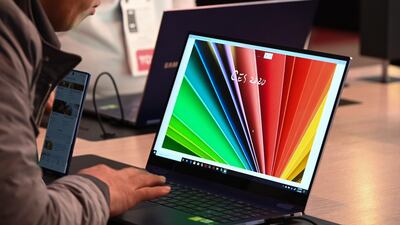Personal computer sales enjoyed a 0.6 per cent increase in sales in 2019 after seven consecutive years of decline as more businesses switched to the Windows 10 operating system, but sales of Apple Mac computers continued to fall.
Global PC shipments totalled more than 261 million units in the last 12 months to December 31, almost 1.5 million more than the same period in 2018, according to US-based research firm Gartner.
All three top vendors – Lenovo, HP and Dell – witnessed an increase in shipments last year.
However, Apple, which launched a new Mac Pro last month – its first desktop upgrade in six years – did not benefit from the industry-wide growth. Its shipments declined almost 1 per cent in 2019, found Gartner.
“The PC market experienced growth for the first time since 2011, driven by vibrant business demand for Windows 10 upgrades, particularly in the US, Japan, Europe, Middle East and Africa,” said Mikako Kitagawa, senior principal analyst at Gartner.
Chinese tech giant Lenovo, which benefitted from its 2018 acquisition of a majority stake in Fujitsu’s Client Computing Devices business, has the largest global market share at 24.1 per cent in 2019. It is followed by American firms HP and Dell, which had a 22.2 per cent and a 16.8 per cent market share, respectively, according to Gartner’s data. The figures cover desk-based PCs, notebook PCs and ultra-mobile premiums (such as Microsoft Surface), but not Chromebooks and iPads.
Gartner expects the growth in PC sales to continue in 2020 as many businesses in emerging regions such as “China, Eurasia and the emerging Asia/Pacific have not yet upgraded to Windows 10”.
Microsoft’s support for Windows 7, one of the most widely used operating systems globally, is ending on Tuesday and the company is promoting Windows 10 as the main upgrade for businesses and consumers. Windows 10 is set to be used by 1 billion devices this year, according to different reports.
But despite the positive 2019 sales, Massachusetts-based International Data Corporation said in a research note that the next 12 to 18 months will be challenging for traditional PC-makers as the majority of “Windows 10 upgrades will be in the rear-view mirror and lingering concerns around component shortages and trade negotiations get ironed out.”
“Although new technologies such as 5G and dual- and folding-screen devices along with an uptake in gaming PCs will provide an uplift, these will take some time to coalesce," said Jitesh Ubrani, research manager at IDC.
In the past, central processing unit (CPU) supply constraints have adversely affected the PC industry’s growth. A CPU is the part that carries out instructions by performing the basic arithmetic specified by the users.
An ongoing shortage of Intel CPUs, which began in the middle of last year, has begun to affect PC delivery to enterprise customers by the top three vendors. Without this shortage, shipments would have grown faster than the reported results, analysts noted.
“Concerns about CPU availability continued but were helped by the adoption of AMD CPUs while signs of easing trade tensions and other industry drivers helped to increase the market uptake,” said IDC.


